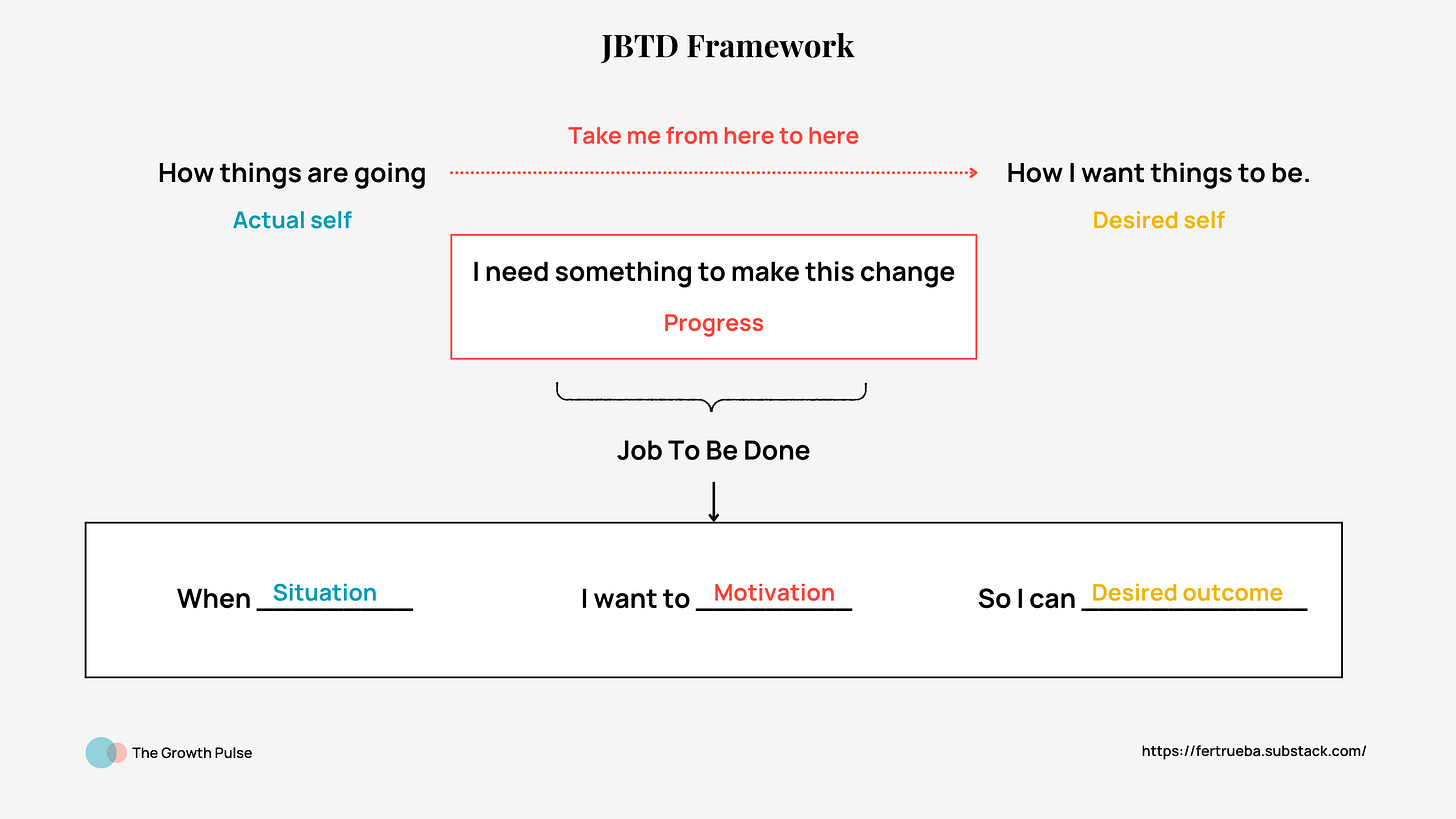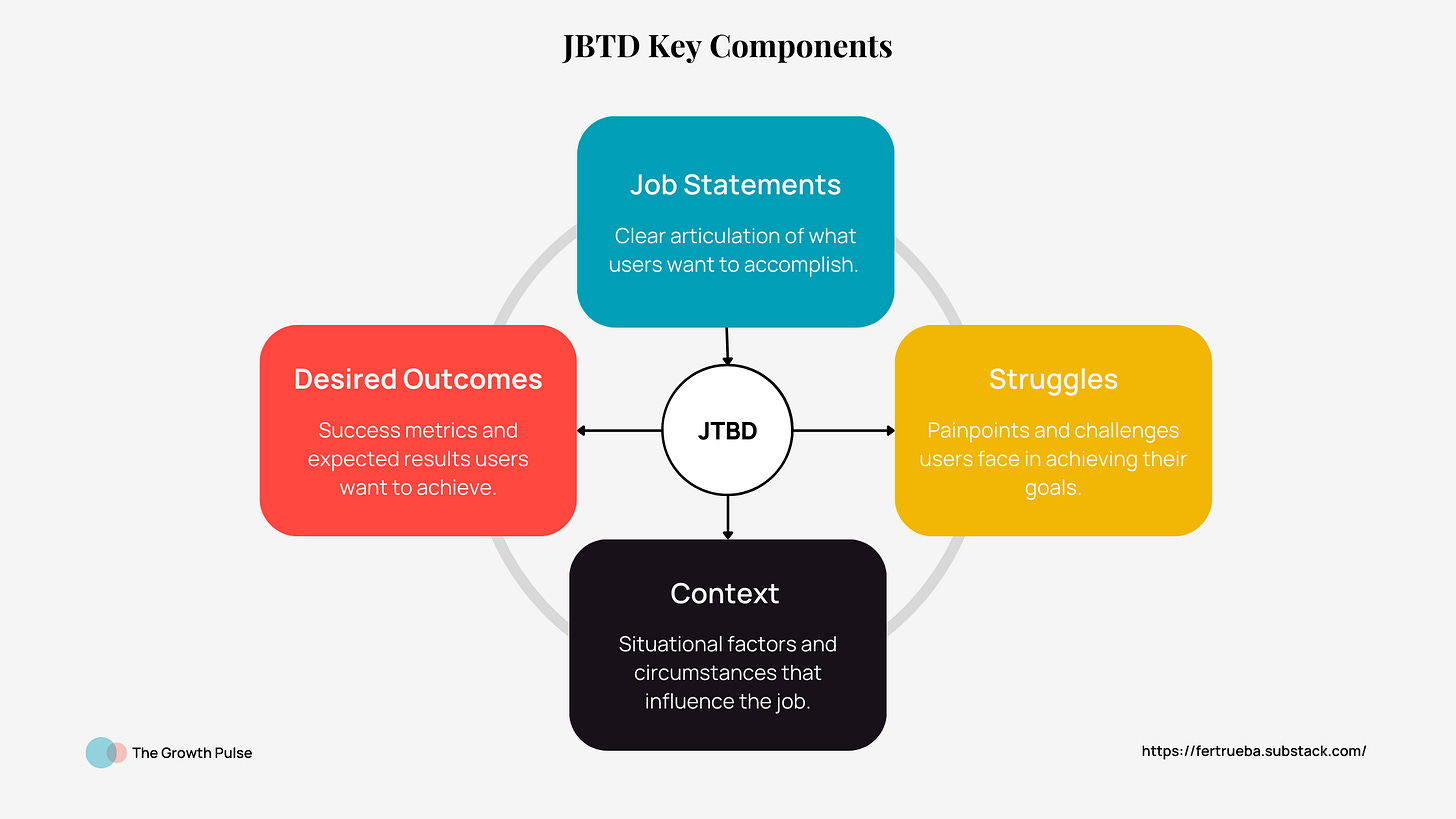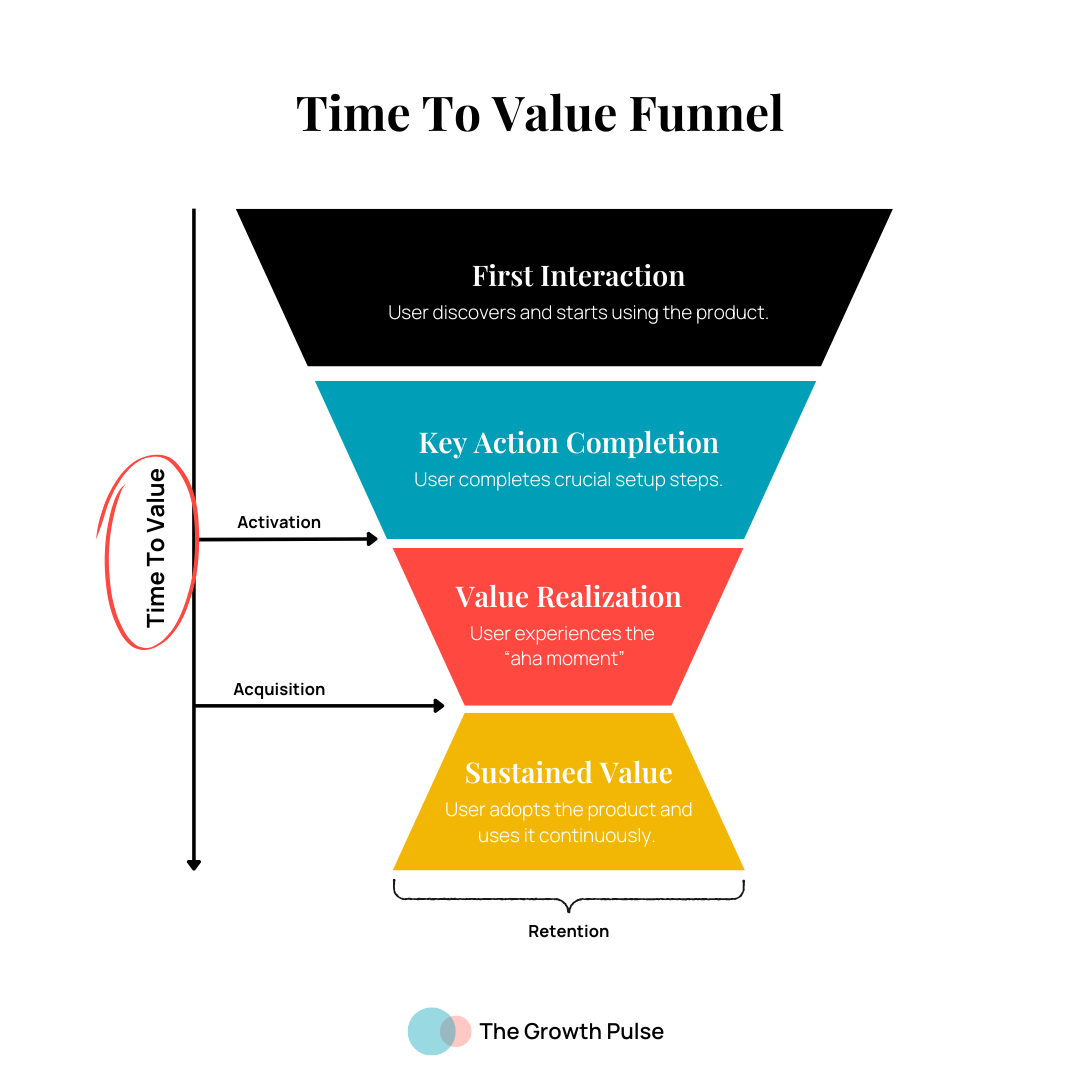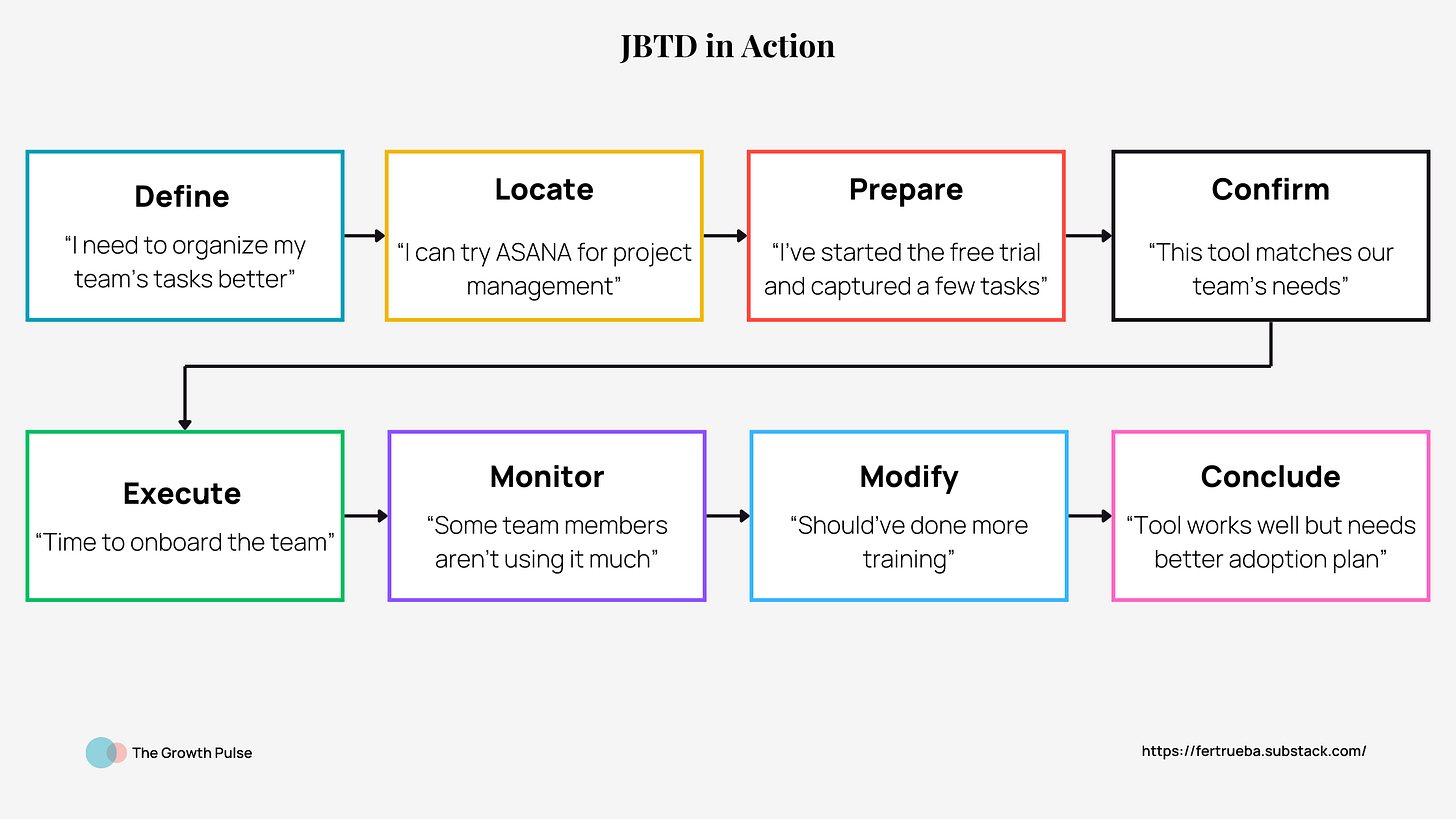How to Use the JTBD Framework to Reduce Time to Value (TTV)
Unlock Faster User Adoption by Understanding What Your Users Really Need
In the fast-moving world of SaaS and subscription businesses, where competition is fierce and users expect instant results, the ability to quickly deliver value to your users is crucial for retention and growth. Time to Value (TTV)—the time it takes for a user to experience the core benefit of your product—is a key metric for understanding how efficiently your product converts new users into active, engaged customers. The quicker users experience value, the more likely they are to stick around and become loyal customers.
One powerful framework that can help reduce TTV is Jobs to Be Done (JTBD). By understanding the core "job" your users are trying to complete when they sign up for your product, you can design an onboarding experience that delivers value faster, smoother, and with less friction. In this article, we’ll explore how you can use the JTBD framework to reduce TTV and enhance your Product-Led Growth (PLG) strategy.
What is JTBD and How Does It Relate to TTV?
The Jobs to Be Done (JTBD) framework is all about understanding the underlying needs and motivations that drive user behavior. Instead of focusing on who your users are—demographics, industry, role, etc.—JTBD focuses on what they are trying to accomplish when they choose your product. This "job" is not just about the functional task they want to complete but also about the emotional and social outcomes they expect.
The key components of JTBD include:
Job Executor: The user who needs to get the job done.
Functional Job: The task the user wants to accomplish (e.g., automate a process, manage a project).
Emotional Job: How the user wants to feel during and after completing the task (e.g., empowered, confident, relieved).
Context: The circumstances in which the user is performing the job (e.g., on-the-go, in the office, under time pressure).
In the context of Time to Value, understanding the JTBD helps you identify the key pain points and expectations of your users. Once you know what job they want to complete, you can streamline the onboarding process to focus on the specific features and functionality that matter most to them. This helps users experience value much quicker, reducing friction and improving the likelihood of long-term engagement.
Why Reducing TTV is Critical in a PLG Strategy
In a Product-Led Growth (PLG) model, the product itself is the primary driver of user acquisition, retention, and expansion. For PLG to be successful, users must quickly understand the value your product provides. If it takes too long to see that value, users may churn before they fully experience it.
Time to Value (TTV) refers to the time it takes from when a user signs up to when they experience the core value of your product. Reducing TTV is critical because:
Faster Onboarding = Higher Conversion Rates: When users get to value quickly, they are more likely to continue using the product and convert to paid plans.
Enhanced User Satisfaction: The quicker users see value, the more satisfied they are with the product, leading to higher engagement and loyalty.
Lower Churn: The longer users wait for value, the higher the chances they’ll abandon your product. A seamless, fast path to value helps reduce churn.
By using the JTBD framework to optimize your onboarding experience, you can ensure that users encounter the most relevant features right away, cutting down the time it takes for them to see value.
How to Use JTBD to Optimize Onboarding and Reduce TTV
Now that we understand the importance of JTBD and TTV, let’s break down how you can apply the JTBD framework to reduce TTV through better onboarding.
Step 1: Identify the Core Job(s) the User Wants to Accomplish
The first step in using JTBD to reduce TTV is understanding what job the user is trying to complete when they sign up for your product. This involves speaking directly with your users and analyzing their behavior. Conduct surveys, user interviews, or feedback sessions to uncover the key jobs users want to get done.
For example, if you’re running a project management tool, your users may be trying to complete jobs like “organize tasks for my team,” “track project progress,” or “manage deadlines.” Once you identify the core job, you’ll know which features are most relevant to showcase during onboarding.
Step 2: Define the "Job Map"
A Job Map outlines the steps users take to complete a job. It helps you understand the user's journey from the moment they sign up for your product to the moment they achieve their goal. Breaking down the job into stages helps you identify which steps are most important for the user and where friction may arise.
For example, in the case of the project management tool, the Job Map might look something like this:
Sign Up – User registers and gains access to the platform.
Set Up a Project – User creates a new project.
Invite Team – User adds team members to the project to collaborate.
Organize Tasks – User adds tasks and assigns responsibilities.
Track Progress – User monitors project progress and deadlines.
By mapping out this journey, you can optimize your onboarding process to focus on helping users complete the key tasks in the Job Map as quickly as possible.
Step 3: Simplify the Path to Value
Once you understand the core job and job map, you can focus on simplifying the path to value. This means prioritizing the features that directly help users complete their core job and providing them with easy-to-follow guidance on how to use those features.
For example, if “organizing tasks” is the core job, prioritize helping users set up their first task or project quickly. Use tooltips, in-app guidance, or a step-by-step tutorial to direct users toward the most important features for accomplishing their goal. Avoid overwhelming them with unnecessary features during the onboarding process.
Step 4: Measure and Iterate Based on Feedback
Once you’ve implemented your JTBD-informed onboarding flow, it’s important to measure its effectiveness. Track metrics like completion rates, time spent on each onboarding step, and feature engagement. Are users hitting the core value faster? Are they engaging with the features that matter most to their job?
Iterate based on this data. If you notice users are getting stuck at certain points, revisit the JTBD framework to better align your onboarding process with their needs. A/B testing different onboarding flows or content can also provide insights into how to further optimize the path to value.
Case Study: Slack’s Onboarding Process
Let’s look at how Slack might apply the JTBD framework to reduce TTV.
When users sign up for Slack, the core job they’re trying to accomplish is collaborating with their team in real-time. The functional job is to send messages, share files, and keep everyone updated. The emotional job is to feel connected and productive while working remotely or within a team.
Slack’s onboarding experience focuses on helping users set up a workspace, invite team members, and send their first message quickly. By guiding users to these actions in the first few minutes, Slack ensures that users experience the core value of communication right away. This drastically reduces TTV and increases the likelihood that users will adopt Slack as a primary communication tool for their team.
A few weeks ago, I published an in-depth analysis of Canva’s Product-Led Growth strategy and how they’ve mastered the art of reducing Time to Value (TTV). If you're interested in learning more about their approach, you can read the full analysis here
Conclusion & Actionable Takeaways
Reducing Time to Value is essential for any Product-Led Growth strategy. By using the JTBD framework, you can better understand the core job users are hiring your product to do and design an onboarding experience that helps them get to value faster.
Here are the key takeaways:
Understand the job users want to complete: Conduct user research to uncover the core functional and emotional jobs.
Map the user's journey: Break down the steps users take to complete their job and focus on the critical moments that lead to value.
Prioritize features that align with the job: Streamline the onboarding experience to focus on the features that directly help users complete their job.
Iterate and measure: Continuously test, gather feedback, and optimize based on user behavior.
Start by mapping out your user’s JTBD and optimize your onboarding to help them experience value faster. It’s the first step toward building a truly product-led organization.
Resources to dive deeper into JTBD:
Books:
Competing Against Luck by Clayton Christensen: A seminal book introducing the JTBD framework.
When Coffee and Kale Compete by Alan Klement: A deeper dive into applying JTBD in real-world contexts.
Jobs To Be Done by Jim Kalbach: Aligns your markets, organization, and strategy around customer needs.
Articles and guides:
"JTBD Framework for SaaS Founders" on Medium by First Round Review.
Other Resources:
JTBD Canvas 2.0 - A structured template for applying the framework
JTBD.app - An AI-powered tool to aid in JTBD research
Free e-book and audiobook versions of "Jobs to be Done: Theory to Practice"
The Official Jobs-to-be-Done Playbook - A comprehensive guide for practical application









